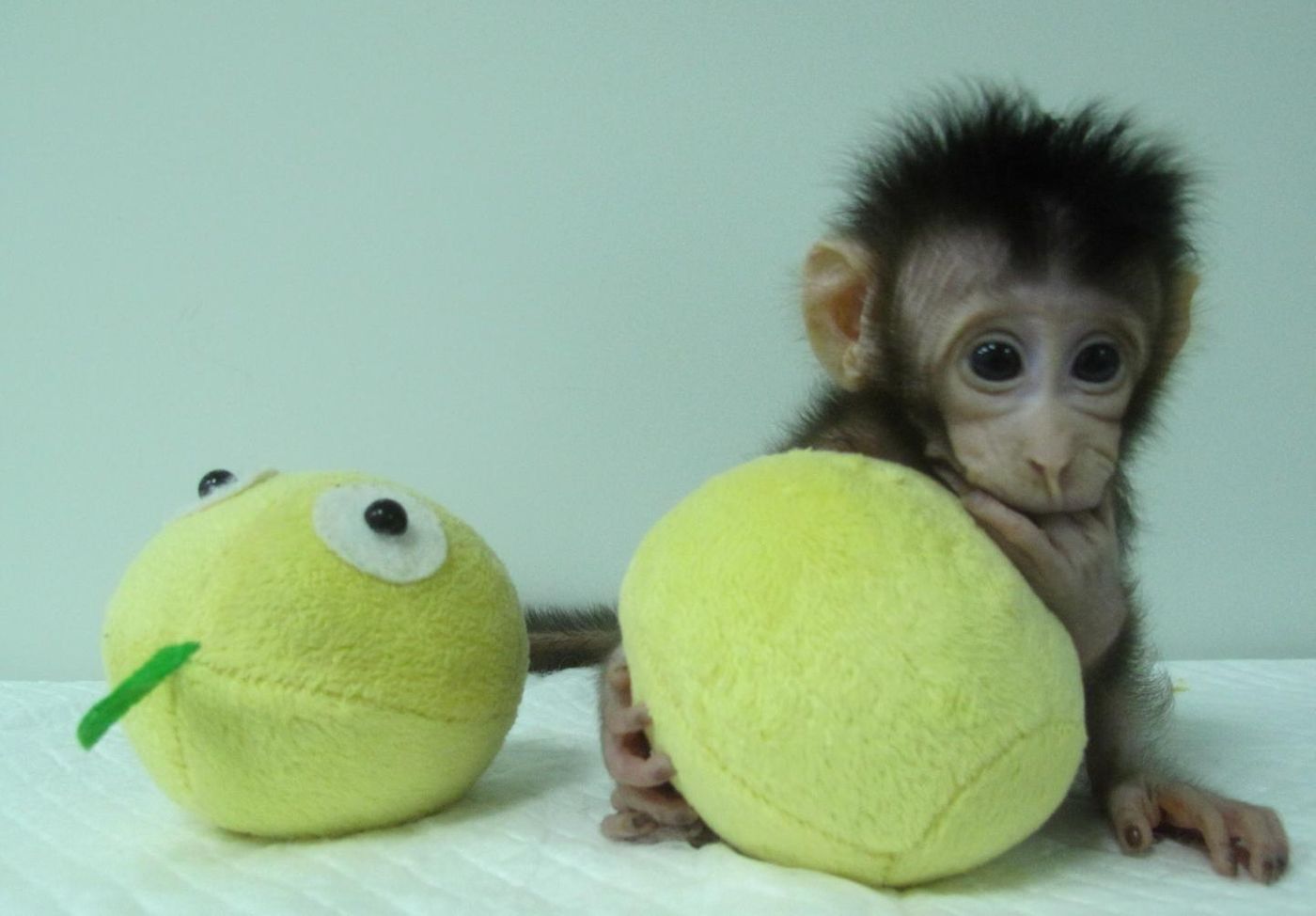Researchers Clone Two Monkeys
Two identical primates have been cloned using a technique called somatic cell nuclear transfer (SCNT), the same tool used to clone Dolly the sheep two decades ago. Born at the Chinese Academy of Sciences Institute of Neuroscience in Shanghai, the long-tailed macaques are Zhong Zhong, who is eight weeks old, and Hua Hua, six weeks old. The names are inspired by the Chinese adjective “zhonghua” for nation or people. Reported in Cell, the work demonstrates that laboratories can now create populations of genetically identical monkeys.
"There are a lot of questions about primate biology that can be studied by having this additional model," explained the senior author of the work Qiang Sun, Director of the Nonhuman Primate Research Facility at the Chinese Academy of Sciences Institute of Neuroscience. "You can produce cloned monkeys with the same genetic background except the gene you manipulated. This will generate real models not just for genetically based brain diseases, but also cancer, immune, or metabolic disorders and allow us to test the efficacy of the drugs for these conditions before clinical use."
In SCNT, the nucleus is removed from an egg cell, and another nucleus from differentiated body cells is inserted. The resulting egg then grows into a clone of the replacement nucleus.
Differentiated monkey cell nuclei have proven more challenging than other mammals like mice or cows when it comes to SCNT. The researchers used epigenetics after the nuclear transfer to modulate genes that impact embryo development. The success rate was then increased by using nuclei taken from differentiated fetal cells like fibroblasts. Zhong Zhong and Hua Hua are identical clones of macaque fetal fibroblasts. Although adult donor cells were also attempted, those clones lived for only a few hours after birth.
"We tried several different methods, but only one worked," said Sun. "There was much failure before we found a way to successfully clone a monkey."
"The SCNT procedure is rather delicate, so the faster you do it, the less damage to the egg you have, and Dr. Liu has a green thumb for doing this," commented co-author Muming Poo, Director of the Institute of Neuroscience of CAS Center for Excellence in Brain Science and Intelligence Technology. "It takes a lot of practice. Not everybody can do the enucleation and cell fusion process quickly and precisely, and it is likely that the optimization of transfer procedure greatly helped us to achieve this success."
The team is planning to continue this research to improve the process. They will also be following the health and development of Zhong Zhong and Hua Hua. More clones are expected to born in the coming months. They encourage the debate about acceptable practices in this field as well.
"We are very aware that future research using non-human primates anywhere in the world depends on scientists following very strict ethical standards," Poo noted.
Site: AAAS/Eurekalert! Via Cell Press, Cell









